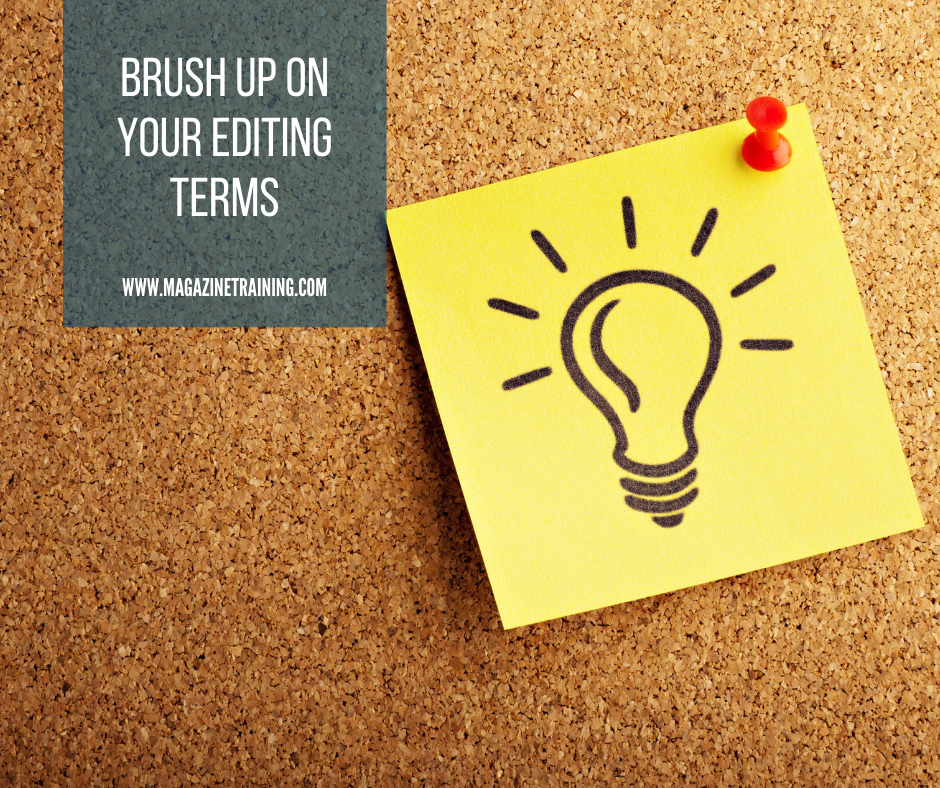
Writer and editors have various terms and jargon that go with the profession. Here are just a few of the commonly used terms and their definitions.
Article tracking form: A form used to follow the progress of an article through the production process.
Big picture editing: Editing with attention to the overall structure.
Callout: A quote from the article printed in large type. It is usually placed on the second or subsequent spread of an article. Callouts serve as a design element and create reader curiosity about the article content.
Editorial plan: A detailed description of the magazine’s content, including what types of articles will appear and descriptions of regular columns and features.
First rights: The right to publish a work the first time, after which publishing rights return to the author.
Guidelines for writers: A written statement describing how to submit material and what kind of material is accepted.
Magazine profile: A description of the magazine’s purpose, intended readers, format, content, tone, and overall design.
Pass (as in first or second pass): Each incidence of reading through and making changes in an article.
Passive verb: A verb in which the subject is acted upon. For example: “The book was read by her.” In English, an active verb is a stronger construction. An example of an active construction would be: “She read the book.”
Query/query letter: A letter in which a writer proposes writing a specific article for a publisher.
Rights: The legal right to publish a certain work.
Seasonal material: Material that is linked to and published during or prior to a season—for example, Christmas or summer.
Sidebar: A small article related to the main article and presented alongside it, often in a box.
Simultaneous submission: A query or manuscript that is submitted to more than one publication at the same time.
Style sheet: A written description of a publication’s style on ambiguous matters such as capitalization, punctuation, use of numbers, and the like.
Target audience: The audience a magazine is intended to reach.
Transition: A verbal bridge connecting paragraphs or sections.
Purchase one of our manuals that cover writing, design, management, and editing. Each manual contains an extensive glossary of terms.
Related posts
Magazine Training International’s mission is to encourage, strengthen, and provide training and resources to Christian magazine publishers as they seek to build the church and reach their societies for Christ.

